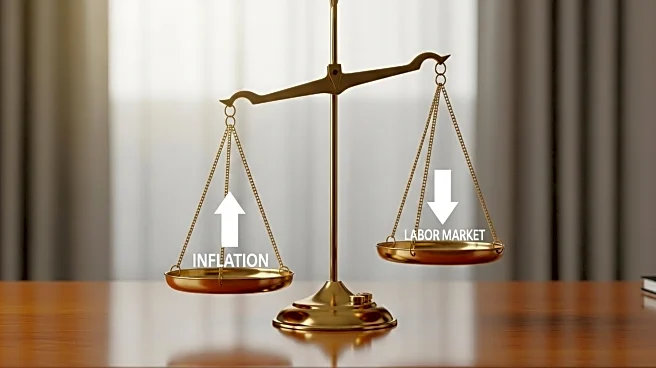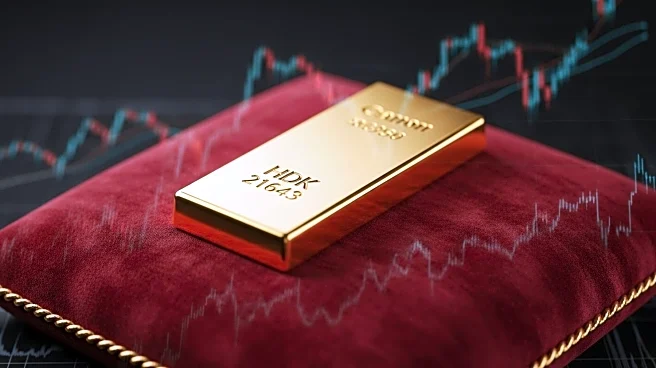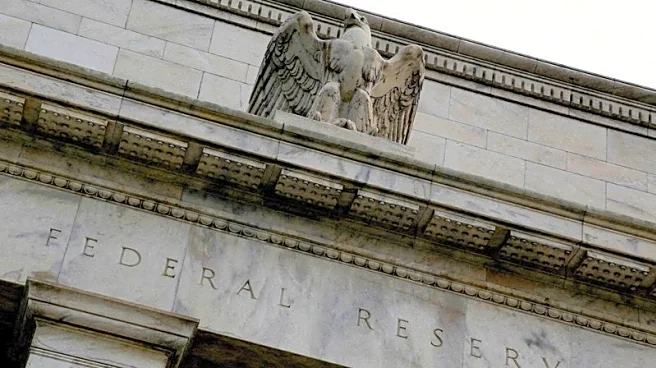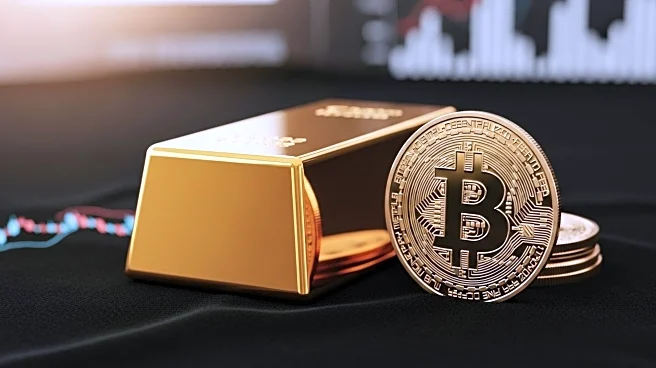What's Happening?
Gold prices are holding firm near an all-time high, approaching the $3,600 mark, driven by expectations of a U.S. Federal Reserve rate cut. This follows a weaker-than-expected jobs report, which showed a sharp decline in U.S. job growth and an increase in the unemployment rate to 4.3%. Spot gold was stable at $3,586.81 per ounce, while U.S. gold futures for December delivery fell slightly. Analysts suggest that the possibility of a rate cut by the Fed is influencing gold prices, as lower interest rates reduce the opportunity cost of holding non-yielding bullion and weaken the dollar, making gold cheaper for investors using other currencies.
Why It's Important?
The potential rate cut by the Federal Reserve is significant as it could impact various economic sectors. Lower interest rates generally stimulate economic activity by making borrowing cheaper, but they also affect currency values and investment strategies. For gold investors, a rate cut could enhance the appeal of gold as a safe-haven asset, especially amid economic uncertainty. The surge in gold prices reflects broader concerns about economic stability and geopolitical tensions, which can drive investors towards assets perceived as secure. Additionally, central banks, including China's, have been increasing their gold reserves, indicating a strategic shift towards gold in uncertain times.
What's Next?
Attention is now focused on the upcoming U.S. inflation report, which could provide further insights into the Federal Reserve's decision-making process regarding interest rates. Traders are closely monitoring the likelihood of a rate cut, with some expecting a 25-basis-point reduction and others considering a larger cut. The inflation data will be crucial in determining the Fed's next steps, as it will influence their approach to managing economic growth and inflation. The outcome of these decisions will have implications for gold prices and broader financial markets.












